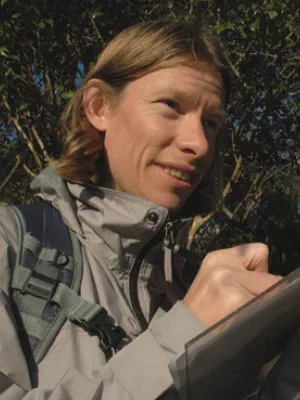
Per-Ola Olsson
Researcher

The Database of European Forest Insect and Disease Disturbances: DEFID2
Author
Summary, in English
Insect and disease outbreaks in forests are biotic disturbances that can profoundly alter ecosystem dynamics. In many parts of the world, these disturbance regimes are intensifying as the climate changes and shifts the distribution of species and biomes. As a result, key forest ecosystem services, such as carbon sequestration, regulation of water flows, wood production, protection of soils, and the conservation of biodiversity, could be increasingly compromised. Despite the relevance of these detrimental effects, there are currently no spatially detailed databases that record insect and disease disturbances on forests at the pan-European scale. Here, we present the new Database of European Forest Insect and Disease Disturbances (DEFID2). It comprises over 650,000 harmonized georeferenced records, mapped as polygons or points, of insects and disease disturbances that occurred between 1963 and 2021 in European forests. The records currently span eight different countries and were acquired through diverse methods (e.g., ground surveys, remote sensing techniques). The records in DEFID2 are described by a set of qualitative attributes, including severity and patterns of damage symptoms, agents, host tree species, climate-driven trigger factors, silvicultural practices, and eventual sanitary interventions. They are further complemented with a satellite-based quantitative characterization of the affected forest areas based on Landsat Normalized Burn Ratio time series, and damage metrics derived from them using the LandTrendr spectral–temporal segmentation algorithm (including onset, duration, magnitude, and rate of the disturbance), and possible interactions with windthrow and wildfire events. The DEFID2 database is a novel resource for many large-scale applications dealing with biotic disturbances. It offers a unique contribution to design networks of experiments, improve our understanding of ecological processes underlying biotic forest disturbances, monitor their dynamics, and enhance their representation in land-climate models. Further data sharing is encouraged to extend and improve the DEFID2 database continuously. The database is freely available at https://jeodpp.jrc.ec.europa.eu/ftp/jrc-opendata/FOREST/DISTURBANCES/DE….
Department/s
- Dept of Physical Geography and Ecosystem Science
- BECC: Biodiversity and Ecosystem services in a Changing Climate
- eSSENCE: The e-Science Collaboration
Publishing year
2023-08-22
Language
English
Pages
6040-6065
Publication/Series
Global Change Biology
Volume
29
Issue
21
Document type
Journal article
Publisher
Wiley-Blackwell
Topic
- Climate Research
- Ecology
Keywords
- bark beetle
- biotic forest disturbances
- climate change
- defoliator
- forest resilience
- pest monitoring
- tree mortality
Status
Published
ISBN/ISSN/Other
- ISSN: 1365-2486

